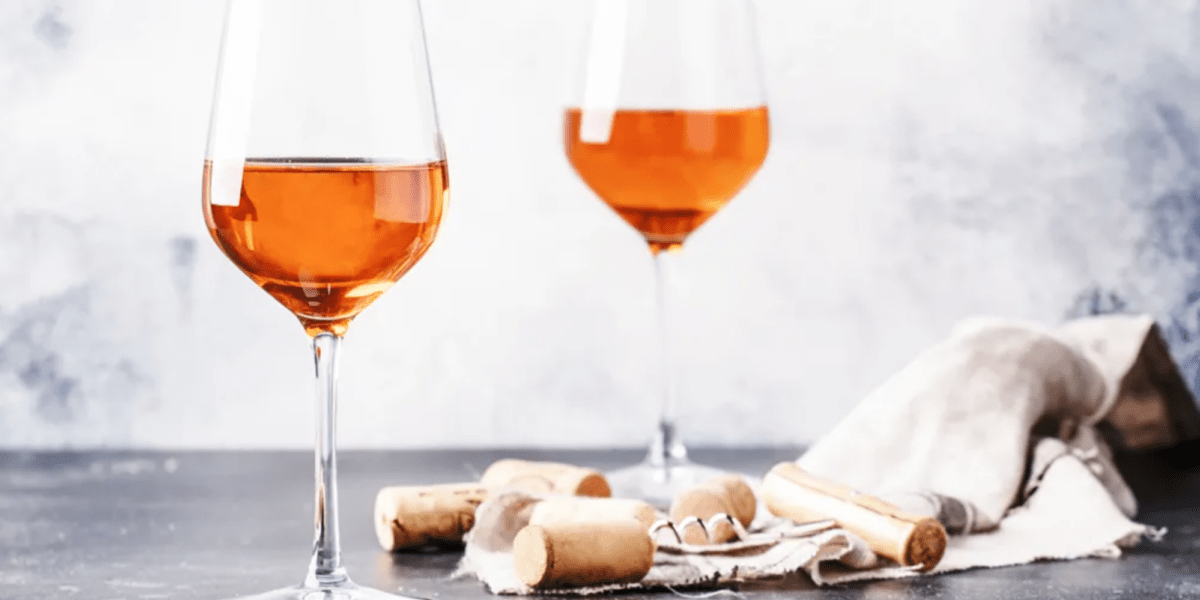
Orange Is the New White: The Rising Star of American Wine
The world of wine is always evolving, and one particular amber-hued variety has quietly been making waves across the United States– orange wine. Also known as “skin-contact wine” or a “maceration white,” the category is fairly new to palettes across the country, but actually has deep roots in ancient winemaking practices.
Orange wine gets its ochre hue from macerating white grapes (aka soaking white grape skins in their grape juice)– a step that imbues the wine with tannins and flavor, and is used in the making of red wine. The country of Georgia has been known to practice this method of winemaking for thousands of years, leaving their wine on the skins in large clay vessels called Kvevri.
The Rise of Orange Wine in the U.S.
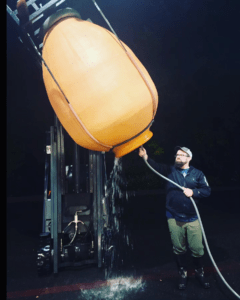
Cellar Master Jarad Bivins washing out the Spanish Tinaja that produces the orange wine at Two Vinters.
Morgan Lee, winemaker at Two Vintners in Woodinville, Washington, says he was one of the first to begin producing orange wine in the state. The inspiration hit on a business trip to Baltimore when a distributor asked him if anyone in Washington was making orange wine.
“I was still in my twenties, and at the time I had never heard of it,” Morgan Lee said. “I replied that we don’t grow citrus fruit in Washington, and he had a chuckle over that.”
After explaining that orange wine has nothing to do with the fruit, the distributor said he was seeing a growing segment of people asking for it.
“I have an affinity for different things,” Lee said. “I really like making things that other people are not making.”
That very harvest in 2010, Lee made his first batch using Gewürztraminer grapes sourced from Yakima Valley for their aromatic nature. By the 2019 vintage, Lee was able to get his hands on some Spanish clay tinajas (giant clay pots) to use in the winemaking process, just like orange wine is traditionally made in Old World countries.
“I really think it’s the best wine in our whole program,” Lee said, “But it’s not for everybody… I like to make wines that make people think, and some people love it and some just can’t wrap their head around it.
Going Back to Basics
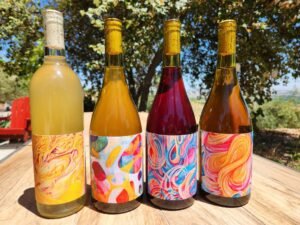
Orange Wines from AmByth Estate
Further south in Paso Robles, California, Gelert Hart is winemaker and vineyard manager for family-run, biodynamic winery AmByth Estate.
“[Orange wine] is very much a big part of the market now since the last 10 years or so, and we are seeing a lot more producers get into it,” Hart said. “Especially from natural wine producers that seem to be more likely to embrace the significant flavor difference you find in orange wines.”
Even so, not all orange wine is natural wine, even though the two seem to be somewhat conflated in the public imagination. Perhaps this is because orange wine in the traditional sense, was left to ferment on the skins for long periods of time with no additives– a hands-off approach that natural winemaking shares.
For George Nosis, winemaker at Atwater Vineyards located in the Finger Lakes area of New York, learning about orange wine was a source of ancient inspiration. Nosis said that learning about the Old World techniques of making orange wine reminds us to go back to basics. In an age where so much winemaking has become a large-scale production that lacks any soul, small-batch wineries such as Atwood don’t actually need to use as many additives as industrial producers.
Orange Wine Tasting Notes
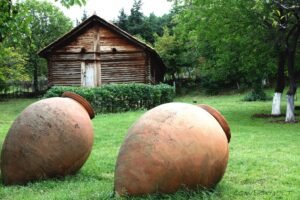
Traditional Georgian Kvevri
It could be said that orange wine is an even more versatile and expansive category than red or white wines, according to Lee. The styles range from light wines similar to rosé to big flavor, Old World wines that are left on the skins for up to a year.
Phillip Hart, founder and original winegrower at AmByth Estate, shared the varied tasting notes from his first orange wines produced in 2006.
“I made four different orange wines from our four [grape] varietals and discovered how very different orange wines are from each other,” Phillip Hart said. “Grenache Blanc – fairly big on the palate, quite forward. Viognier – the time on the skins brought out huge floral notes, extremely distinctive. Roussanne – the most delicate of the four. Marsanne – huge, monstrous, tannic, a beast.”
Since the early 2000s, Nosis has also experimented with several grape varietals in his orange winemaking. He said the best kinds of grapes tend to be those with low acid and high aromatics. He’s played with Chardonnay, Pinot Gris, and Gewurztraminer, to name a few. The best part is discovering something completely new from a grape that had once been old hat.
“You can taste that it’s a Gewurztraminer but now it’s this whole different expression,” Nosis said. “All of a sudden something you thought was mundane takes on new life. It’s like if you found out that your grandma was a rockstar.”
How to Pair Orange Wine
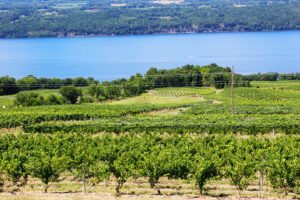
Atwater Vineyards
Most of the wine experts we spoke with emphasized that orange wine is extremely interesting to pair with food.
“[Orange wine] works well with Indian and Thai curries with coconut milk,” Lee said. “In the Northwest here, it’s fantastic with seafood. Halibut with butter sauce. Things that have some fat to them.”
As for if orange wine should be served chilled or room temperature?
“It really depends on whether you are having it with food or not,” Gelert Hart said. “To better express the tannins we treat it like any good red wine, at room temperature. If they are being enjoyed on their own, they are really nice to have chilled.”
However, the most important pairing for orange wine is curiosity and an open mind. The common thread between both wine experts and non-experts alike is that their introduction to orange wine provided a deeper insight into the world of wine. Winemakers saw the ancient practice as a stimulus to a new creative expression of their work. Everyday wine drinkers were invited into learning the process of winemaking in a way they may have never experienced before.
